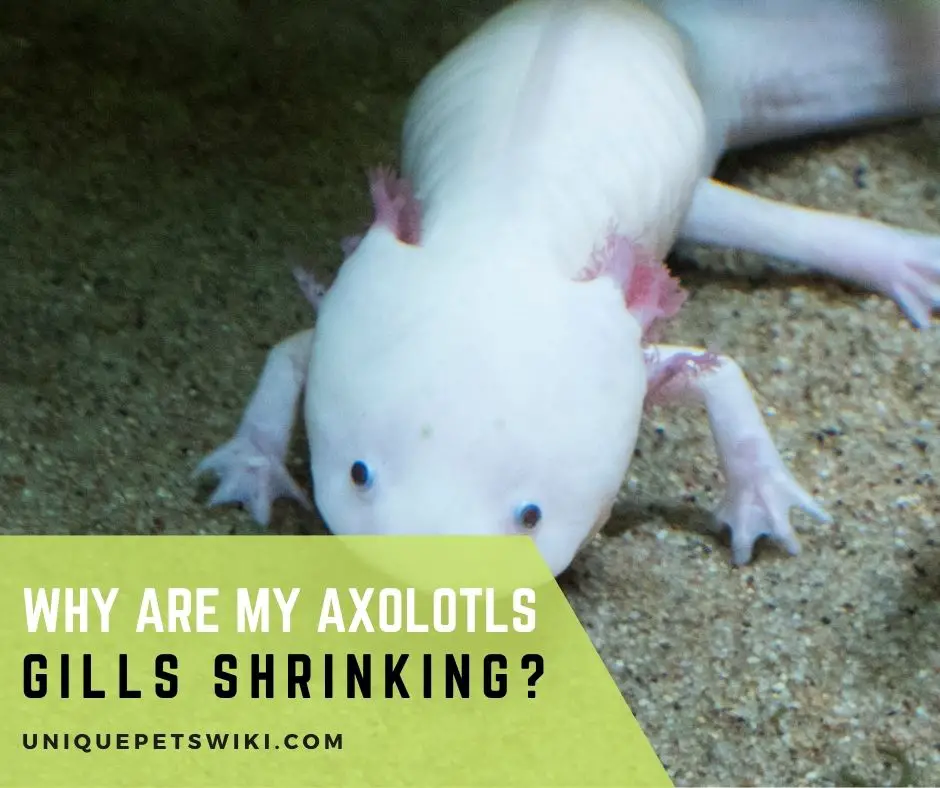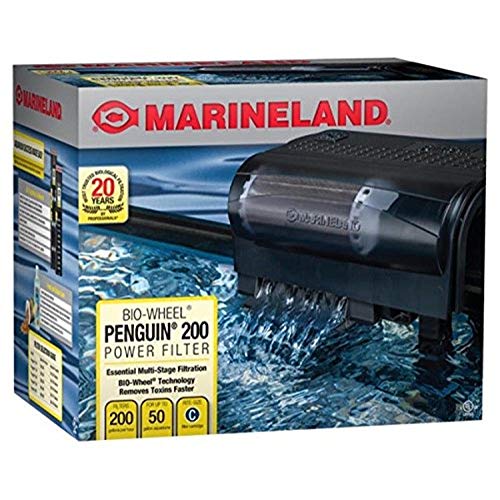Keeping an axolotl healthy is the responsibility of every axolotl owner. Even if you have taken the best care of it, you have probably seen your pet showing weird signs like its gills shrinking
So this raises the question “Why are my Axolotls Gills shrinking?” Naturally, as an axolotl parent, you are concerned and seek answers.
To learn more about the causes and symptoms of this type of problem in your axolotl, as well as possible solutions and preventions, continue reading this article to the end.
Contents
Why Are Your Axolotls Gills Shrinking?
Axolotls’ gills shrink for some reasons, which is not typical behavior. Although there are reasons for concern, in most circumstances it is unlikely to be a serious issue.
The degree to which the gills shrink may be related to oxygen content, water quality, or metamorphosis.
You shouldn’t be too concerned if your water quality is good. Despite its not-so-fluffy gills, an axolotl can be healthy.
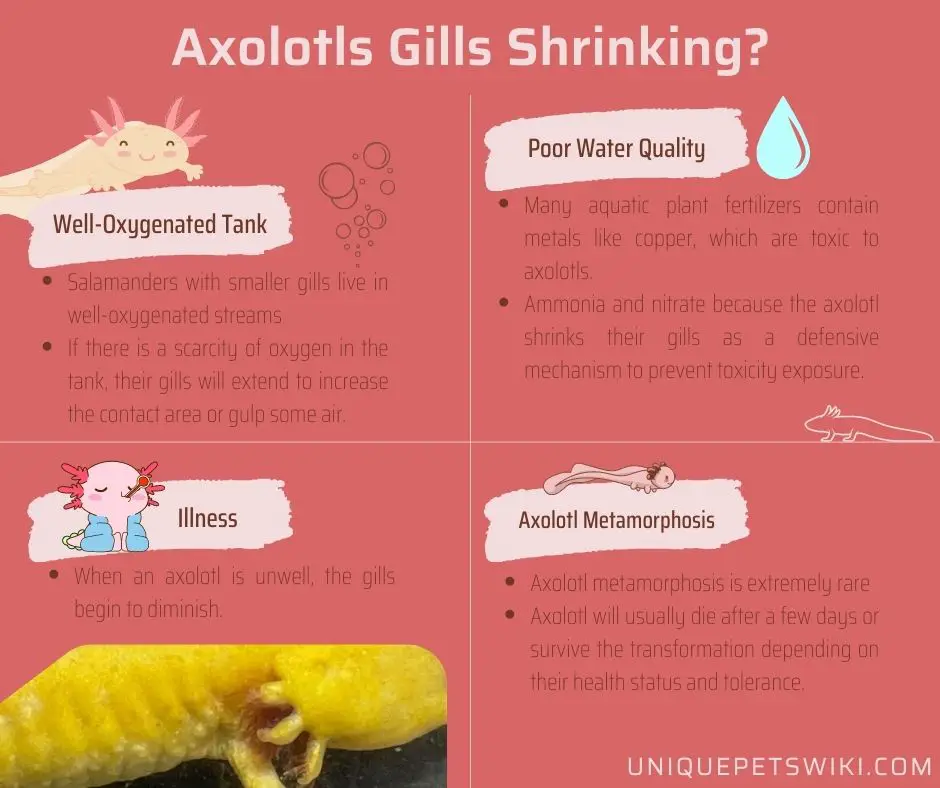
Well-Oxygenated Tank
Let’s start with the first reason: the existence of a well-oxygenated tank. Salamanders with smaller gills live in well-oxygenated streams (for example, mountain streams).
So, there’s no need to be concerned; this is completely normal!
If there is a scarcity of oxygen in the tank, their gills will extend to increase the contact area or gulp some air.
If your axolotl’s behavior and hunger remain unchanged, and the gills gradually stop shrinking, a well-oxygenated tank could be the cause of the problem, which is not a serious issue.
Check out: Do Axolotls Need Air?
Marineland Penguin Bio-Wheel Power Filter
- WITH ROTATING BIO-WHEEL: Patented Bio-Wheel technology provides excellent wet/dry biological filtration
- MULTI-STAGE FILTRATION: Delivers mechanical, chemical and biological aquarium filtration to maintain a clean aquatic environment
- MARINELAND FILTRATION PRODUCTS: Count on Marineland brand for the most reliable, technically advanced aquariums and accessories on the market
- COMPATIBILITY: Use with Marineland Rite-Size Filter Cartridges (see individual filter for sizing recommendations)
- FIVE SIZES: Available in 75 GPH, 100 GPH, 150 GPH, 200 GPH and 350 GPH sizes
Last update on 2022-12-30 / Affiliate links / Images from Amazon Product Advertising API
Poor Water Quality
Another cause on the list is poor water quality, particularly if there is metal iron in the water. If the quality of the water is consistently poor, it might cause minor to serious health concerns.
You may notice problems with your axolotls if they grow stressed due to poor water quality. Many aquatic plant fertilizers contain metals like copper, which are toxic to axolotls.
Check water quality for ammonia and nitrate because the axolotl shrinks their gills as a defensive mechanism to prevent toxicity exposure.
Check out: Full Requirements & Water Conditions for Axolotl in Captivity
Illness
When an axolotl is unwell, the red filaments (also known as feathers) that line the backside of the gills begin to diminish.
Other signs to look for include a decrease in appetite and a noticeable lack of energy.
Unless you see noticeable symptoms such as lumps, rashes, cottony material, or unusual coloring, a change in water quality or increased filtration may help.
Additionally, check the pH and replace the water if you find any harmful compounds. And finally, Remove any uneaten food or waste that may have contaminated the water.
Axolotl Metamorphosis
Axolotl metamorphosis is extremely rare; there is a very minimal probability that your axolotl is experiencing salamander metamorphosis.
If you can’t think of another reason, this could be it, and you’ll find out in a few days if it is.
Your axolotl will usually die after a few days or survive the transformation depending on their health status and tolerance. They simply cannot cope with this transformation.
Morphing has several causes, one of which includes the temperature in the tank being too high, the tank being too crowded, and the water current being too strong.
Furthermore, some signs that your axolotl is morphing are your pet would recede its tail, dorsal fins and its eyelids would start to form.
Moreover, while metamorphosis is totally normal for tiger salamanders, axolotls generally metamorphose in an attempt to live in harsh aquatic circumstances.
What Should You Do When Axolotl Gills Shrink?
Axolotls are delicate creatures that require specific conditions to keep them and their feathery gills healthy.
Maintaining the proper water parameters, monitoring their behavior, and other factors are required for healthy axolotl gills.
The first step is to assess the amount of shrinkage that has occurred. Did the gills shrink too much in such a short period of time?
You may also check the water parameters and fine-tune them to the ideal level.
Always keep in mind that Axolotls may tolerate water with a pH ranging from 6.5 to 8.0, but the best pH level for them is approximately 7.4 – 7.6.
Axolotls can endure water temperatures ranging from 59 to 73 degrees Fahrenheit (15 and 23 degrees Celsius).
The recommended water temperature ranges from 60 to 64 degrees Fahrenheit (16 and 18 degrees Celsius).
Also, keep a close eye on their actions. Unfortunately, if they morph, you must assist them in doing so. There is no way to halt it.
Axolotl Gills and Its Problems Related
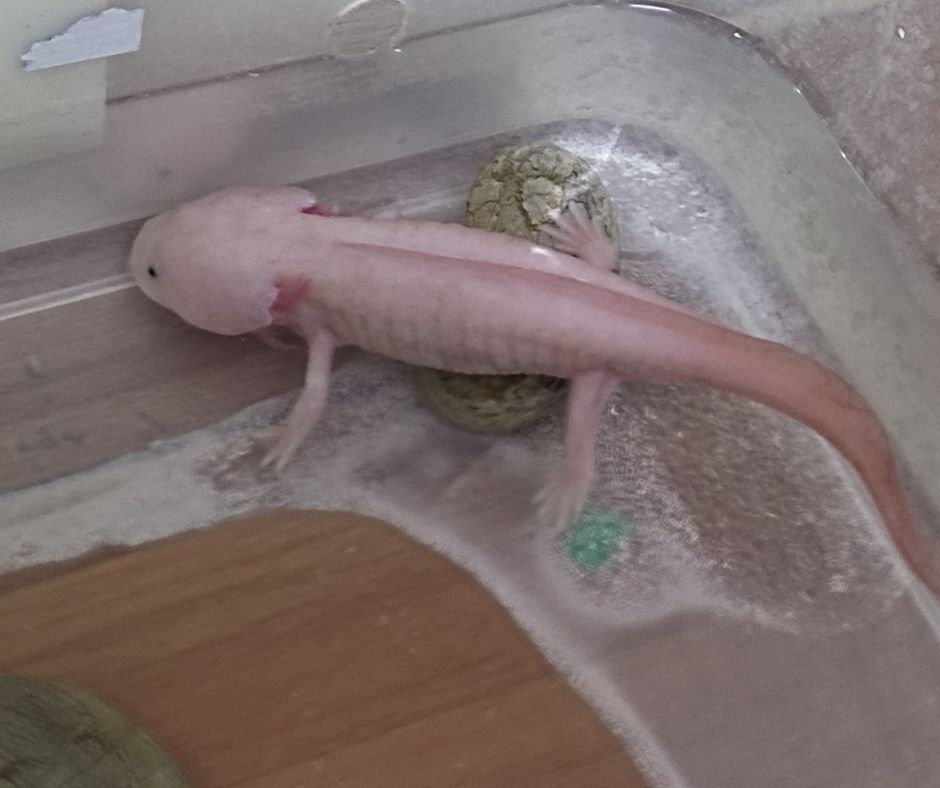
Axolotl gills are not fluffy
Numerous owners have reported that their axolotl’s gills are not fluffy.
Due to the fact that axolotls acquire oxygen via their gills, they frequently have longer, more feathery gills in low oxygen environments.
This means that if you purchase an axolotl with extremely feathery gills and place it in an adequately oxygenated tank, its gills won’t be fluffy anymore.
You shouldn’t be alarmed by this because it is perfectly normal!
Black axolotl turning white
If you have black melanoid axolotls and use white sand as a substrate, the black axolotls may appear lighter in color as a result of the substrate’s influence.
When black melanoids reach maturity, they frequently spend time near the bottom of the tank, where the substrate may cause them to momentarily change color.
This is not harmful because it does not induce infection or sickness; rather, it alters its look briefly.
Axolotl gills turning red
Red gills simply indicate that there is increased blood flow to the gills; this could be caused by low oxygen levels in the water, or he is simply excited/nervous.
This may also occur following a water change or when transferring to a new tank. There is no reason to be concerned. You can simply leave your axolotl alone!
Axolotl gills turning black
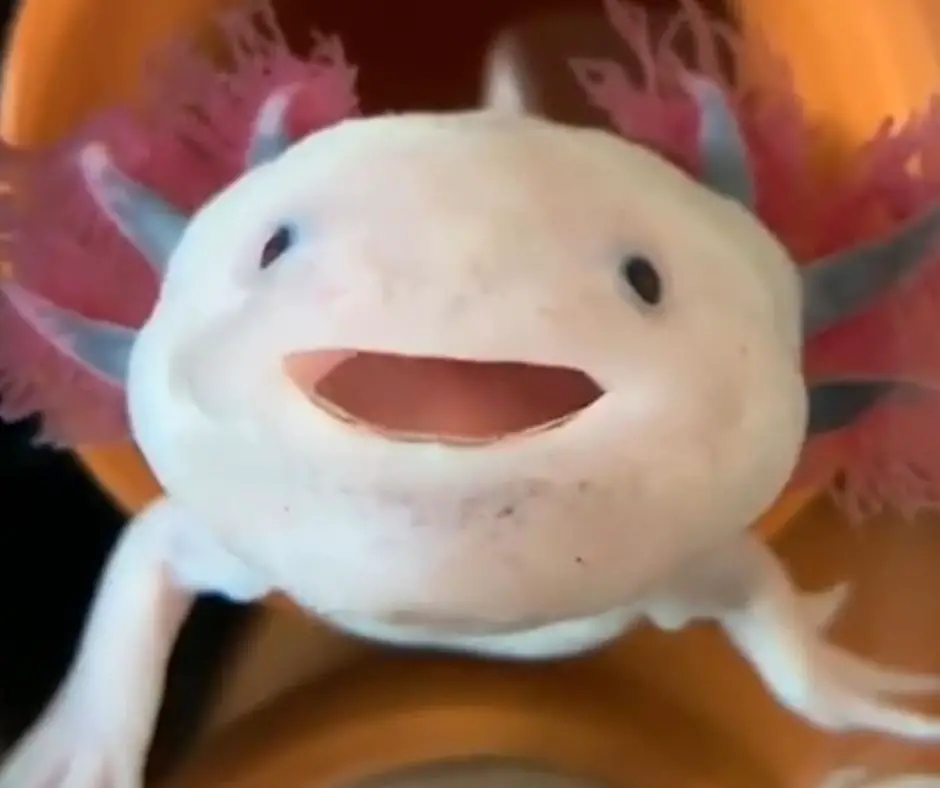
There are three primary reasons for the blackening of your axolotl’s gills. When axolotls relax, they may lose pigmentation and become lighter or darker in color, depending on the color of their habitat.
The second reason might be seen as a symptom of impending stress or blood loss if a person is gravely hurt.
The last factor is due to the water quality in which your axolotl lives. Always do routine ammonia, nitrite, nitrate, and pH tests.
Zacro LCD Digital Aquarium Thermometer
- Submerge probe into fish tank to measure water temperature (Submerge probe only, do not submerge thermometer in water)
- Easy to apply suction cup and easy to read LCD screen; Temperature readings to within 0.1 degree
- Large, easy to read LCD display. Compact design for discrete use
- Temperature range -50 degree Celsius~ + 70 degree Celsius; Operating temperature -10degree Celsius~ +50degree Celsius
- Powered by one LR44 button cell (included)
Last update on 2022-12-29 / Affiliate links / Images from Amazon Product Advertising API
Wrapping Up
Axolotls make excellent aquatic pets because they are unlike anything else available.
While we all admire the appearance of an axolotl’s feathery gills, these protuberances have a purpose other than aesthetics.
The gills of an axolotl can alert us to illness, changes in water quality, and even how content or agitated they are in their tank. Axolotls will keep us occupied for years to come with proper care and food.
Simply keep a watch out for any early symptoms of disease or inappropriate treatment on those gills!
Your urgent care is required if the gills of an axolotl begin to fall out. In some instances, the reason is resolvable, albeit not immediately.
In some circumstances, such as metamorphosis, there are no known treatments. Fortunately, these are fairly unusual occurrences, and ideally, your axolotl will avoid them.
